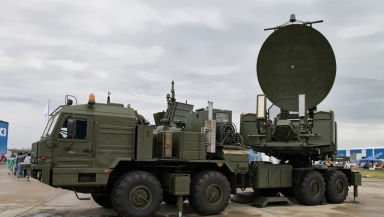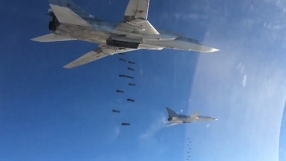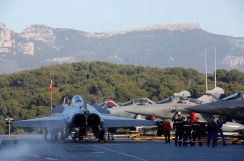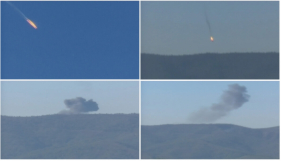
Russia is reportedly providing direct military air support to Syria and is using electronic warfare to jam Islamic State (ISIS) communications while at the same time preventing NATO from detecting what it is up to.
Electronic warfare is the ability to manipulate the electromagnetic spectrum to enable a combatant to sense where enemy targets are, so that he can attack the enemy first, or prevent the enemy from attacking him, the International Business Times reported.
Examples of things that can be done with electronic warfare include communications jamming, radar jamming, reconnaissance and countermeasures using infrared, radio and electro-optical frequencies.
Moscow has already deployed in Syria a highly advanced missile system capable of shooting down aircraft from the ground, according to reports by the Russian news media.
Russia's massive military buildup in the region comes as its forces begin to suffer casualties as a result of the country's efforts to defend Syrian President Bashar al-Assad and fight ISIS militants.
Last week, Turkish forces shot down a Russian Su-24 warplane for allegedly crossing into Turkish airspace while conducting strikes on ISIS positions in Syria, Fox News said.
Russian President Vladimir Putin described the strike as "a stab in the back by the accomplices of terrorism."
Last Oct. 31, a Russian passenger aircraft was also brought down and crashed at Egypt's Sinai killing all 224 passengers on board, mostly Russians returning home from a vacation. ISIS has claimed responsibility for the attack.
Responding to Turkey's downing of a Russian warplane, Russian Lieutenant-General Evgeny Buzhinsky said his country will begin using "electronic jamming systems that are based both on the ground and installed on special aircraft." The defensive weapons are aimed at stopping a similar attack in the future.
"Regarding the possible impact of this incident on the further developments of the operation in Syria, I think that from now on, our pilots will be more attentive and if the Turks continue behaving in such a manner, Russia will have to resort to electronic jamming and other warfare equipment, including special aircraft with special equipment on board, in order to protect our pilots from being stricken with missiles," Buzhinsky said, according to Sputnik News.
On Oct. 5, the Russian military's Krasukha-4 station—a mobile, ground-based electronic warfare system—was spotted in Syria, IBTimes reported.
"The Krasukha-4 is a broadband multifunctional jamming station that is able to neutralise low-Earth orbit (LEO) spy satellites such as US Lacrosse/Onyx series, airborne surveillance radars and radar-guided ordinance at ranges between 150km-300km," the IBTimes said.
The Krasukha-4 is being used by the Russian military to deny ISIS surveillance information and radio communication, according to David Stupples, a professor of Electrical and Electronic Engineering and Director of Electronic Warfare at City University London.


















